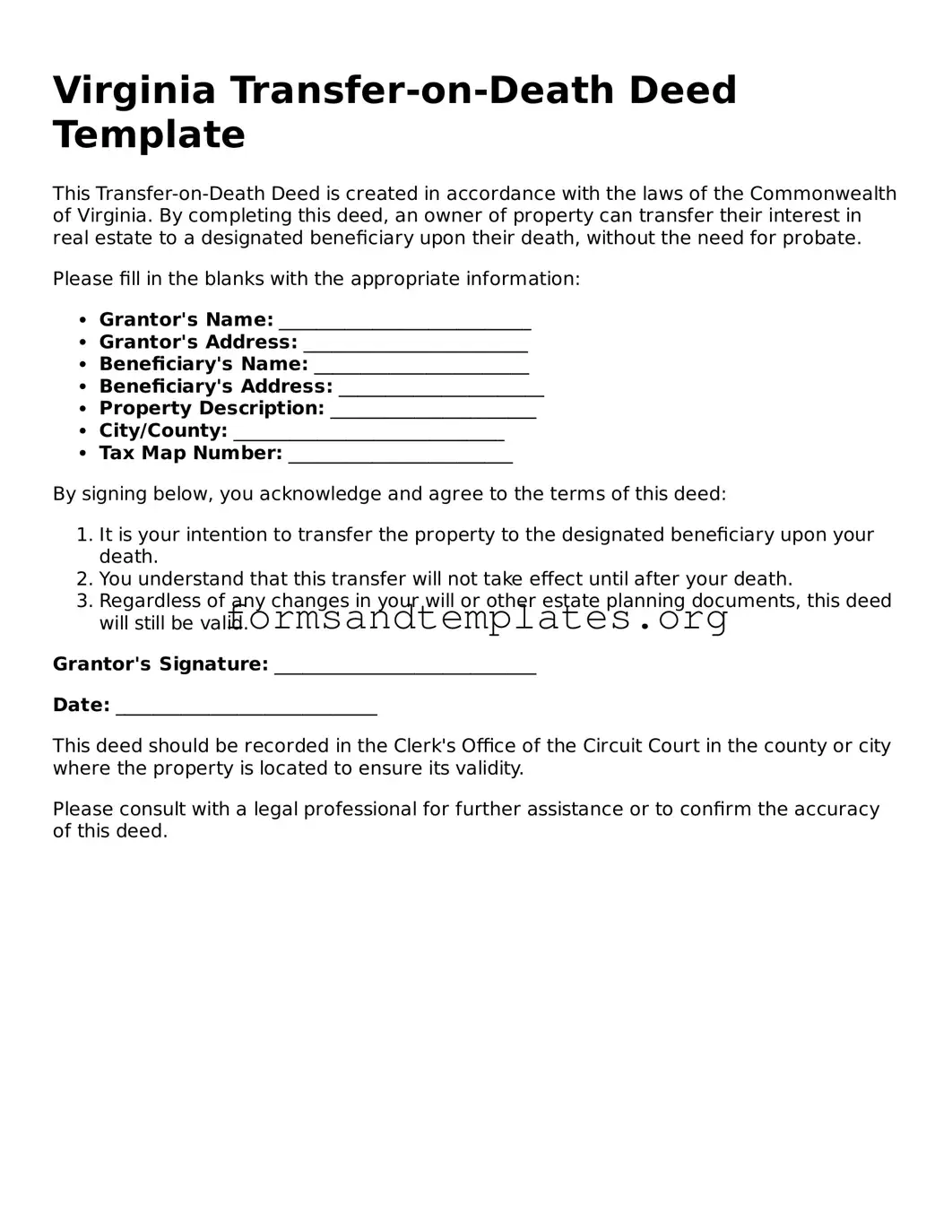Virginia Transfer-on-Death Deed Template
This Transfer-on-Death Deed is created in accordance with the laws of the Commonwealth of Virginia. By completing this deed, an owner of property can transfer their interest in real estate to a designated beneficiary upon their death, without the need for probate.
Please fill in the blanks with the appropriate information:
- Grantor's Name: ___________________________
- Grantor's Address: ________________________
- Beneficiary's Name: _______________________
- Beneficiary's Address: ______________________
- Property Description: ______________________
- City/County: _____________________________
- Tax Map Number: ________________________
By signing below, you acknowledge and agree to the terms of this deed:
- It is your intention to transfer the property to the designated beneficiary upon your death.
- You understand that this transfer will not take effect until after your death.
- Regardless of any changes in your will or other estate planning documents, this deed will still be valid.
Grantor's Signature: ____________________________
Date: ____________________________
This deed should be recorded in the Clerk's Office of the Circuit Court in the county or city where the property is located to ensure its validity.
Please consult with a legal professional for further assistance or to confirm the accuracy of this deed.
